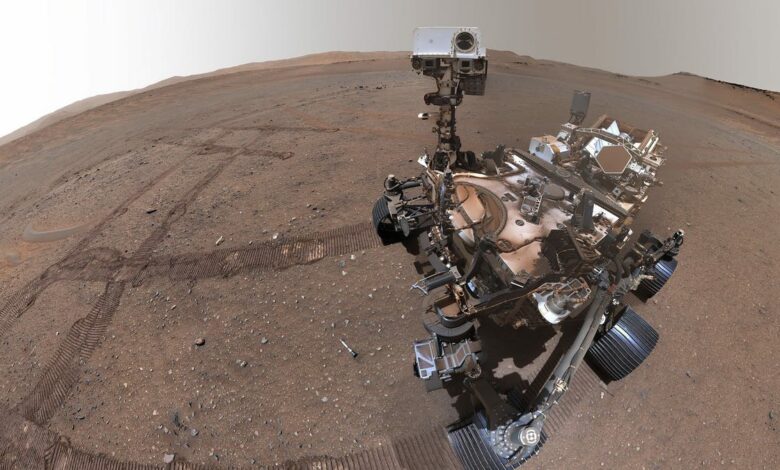Mars rover finally leaves crater it lived in for years


NASA’s Mars rover has had enough of hanging around on the bottom of a crater. The six-wheeled Perseverance has begun its ascent to break free of its confines — and it still has a ways to go. Once it reaches the top, it’ll celebrate its freedom from the crater’s clutches by collecting more rock samples.
Perseverance has spent the past three and a half years on the floor of Jezero Crater. Because Perseverance landed there when it originally arrived on Mars, it is the only Martian home the rover has ever known.
Since landing, the spacecraft has been painstakingly collecting rock samples and sending home stunning photos of the Red Planet, including this rock in the butt crack.
Now that the rover has completed its work in the crater, it is on its way to the rim. The journey up and out is not without its hazards. NASA says Perseverance will climb 1,000 feet (305 meters) while encountering terrain with slopes of more than 23 degrees. NASA says rover operators will try to avoid slopes that tilt Perseverance more than 30 degrees. It has already traveled 18 unpaved miles, and NASA says the bot is in excellent condition and should make the trip without incident.
Perseverance will take a winding route to avoid the greatest obstacles

Perseverance’s path winds through different parts of the crater to avoid the largest and most dangerous obstacles.
It’s easy enough to imagine a rover slowly but steadily climbing a large hill to reach the top. Perseverance’s path, however, is a bit more complex than that. The bot will be working its way around the crater to avoid the most challenging obstacles. According to NASAthe path is managed by Perseverance’s automatic navigation capabilities, which follow a route programmed by the rover’s handlers.
The reason the rover is going there is to collect more rock samples. Samples collected from the crater floor represent some of the oldest rocks on the planet, giving scientists more data on what Mars looked like in its early years. The top of the crater has younger rocks that will tell scientists more about things like whether Mars had water and for how long, and whether anything lived when there was water.
“These cores are likely the oldest materials ever sampled from a known environment that was potentially habitable,” Tanja Bosak, a geobiologist at MIT in Cambridge and a member of the Perseverance science team, said in a statement. “When we bring them back to Earth, they will tell us so much about when, why, and for how long Mars had liquid water, and whether organic, prebiotic, and possibly even biological evolution occurred on that planet.”
NASA expects Perseverance’s journey to be complete by the end of this year, so expect to see a small robot making a big climb on Mars for scientific research while you go about your daily business.




